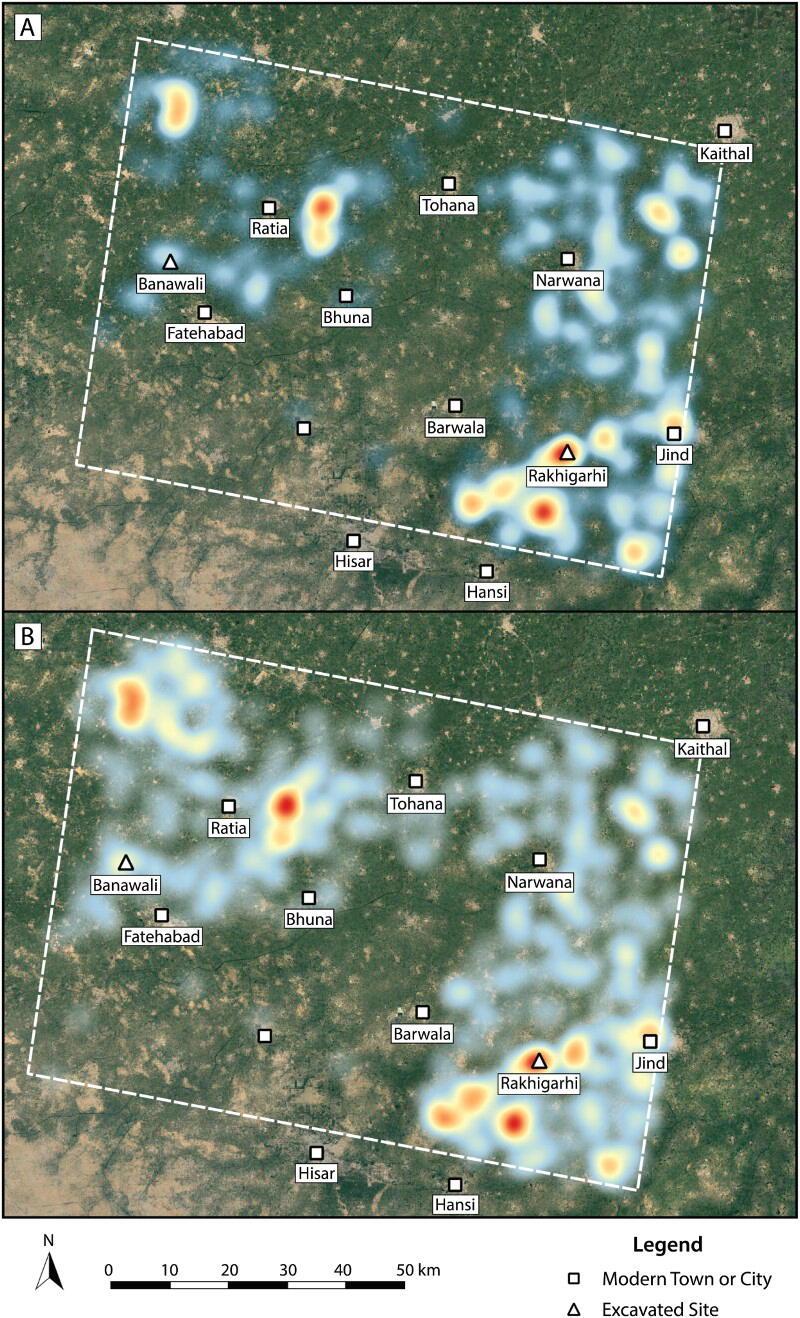Above: Density of site locations A) prior to and B) subsequent to 2009. Concentrations are depicted using a heat map color gradient between areas of high density (red) and low density (blue). Basemap Source: Google Earth 2018.
A complex meta-analysis of data in a corner of northwestern India for what it can tell us about settlement patterns during the ancient Indus period and just after, when a host of factors, including possibly climate change, seem to have contributed to a re-allocation of populations between types of settlements. The authors, who brought together finds in the area around Rakigarhi [shown above] write: "The pilot database facilitated a test of the following hypotheses: first, that in northwestern India, the Mature Harappan period saw the nucleation of settled population; second, that the Late Harappan period saw an increase in settlement density. Our results support these hypotheses and enhance the interpretation that site density increased in particular locations with the decline of Indus cities. It follows that the landscapes of urbanization and de-urbanization created by Indus populations integrated a range of varied environments to produce and sustain social complexity."
The paper is another example of how geographical information systems (GIS) and the precision of increasing amounts of data, combined with intrepid research like that of the Cambridge TwoRains project, allows for much finer distinctions and discoveries, always carefully contextualized. For example, the authors conclude that "The northeastern quadrant of the sample area appears to have been densely occupied in the Early Harappan period and re-occupied later. There thus appears to have been a shift in settlement locus from the northwestern to the northeast of the sample area during the closing years of the Mature Harappan period and potentially also movement of populations into the northeast from outside of the study area. It has been argued that this particular area of the plain may have had more reliable monsoon rainfall. A shift toward this part of the plain may have been a key strategy for building resilience in the changing climatic conditions that characterize the end of the Mature Harappan period. However, it remains unclear to what extent this Late Harappan shift towards the northeastern quadrant of the study area may be an artifact of early methods and assumptions" [see original article for the many citations behind these statements].

